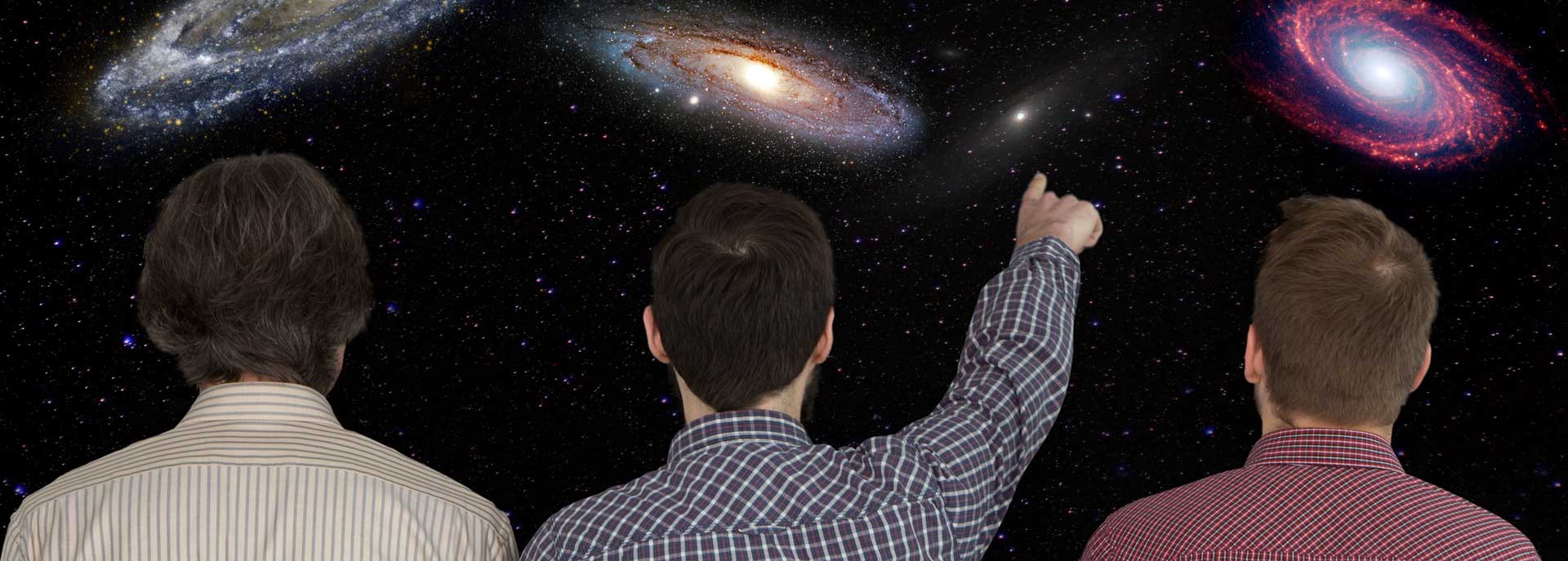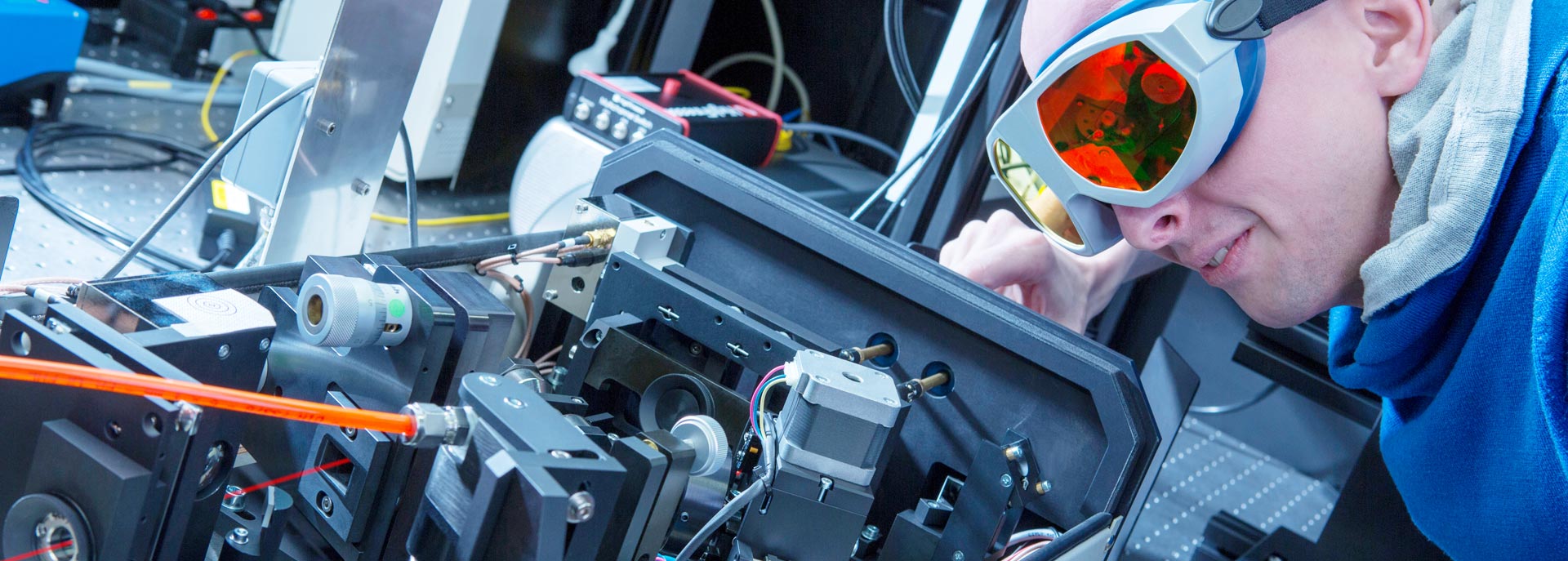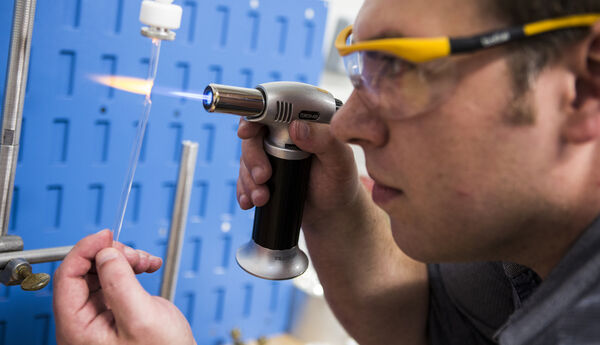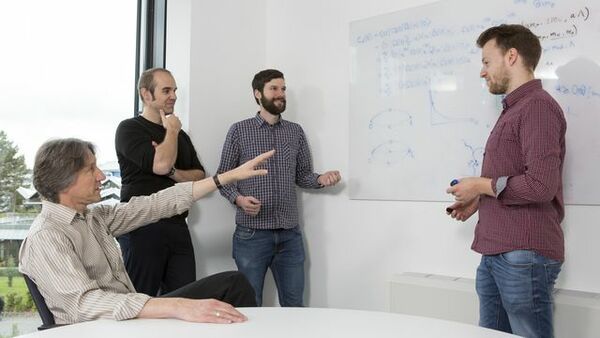Simply HIM: Our research for everyone
Investigating the strong interaction - The Helmholtz Institute Mainz explores the force that holds our world together at its core
The Helmholtz Institute Mainz (HIM) deals with a fundamental question of physics: Why is there stable matter, what holds it together? Although research in recent decades has provided a profound picture of the buildup of our world, many questions remain unanswered: How are protons and neutrons - the building blocks of each atomic nucleus - made up in detail? And what exactly characterizes the force that “glues” these particles together to form the matter we are surrounded by and out of which we ourselves are made? The HIM researchers are investigating these issues using large accelerator facilities, highly sensitive detectors and elaborate supercomputers.
From the physicist’s point of view, the world consists of tiny particles. If you could zoom at will into a grain of salt with a supermicroscope, you would first see a crystal lattice and then the atoms that make up the crystal - sodium and chlorine. At the next stage of magnification, you would see that the atoms consist of a shell formed of electrons and a tiny, massive nucleus. This nucleus, in turn, is composed of even smaller particle - protons and neutrons. A final zoom would reveal that these particles consist of even smaller subunits - the quarks.
Together with the electrons, these quarks are considered to be the basic building blocks of our world, the indivisible entities that matter is made of. By now, the researchers know six quark types of different mass. Only two types are stable and make up the matter we are familiar with. The other four are unstable and decay again as soon as they are produced. There are also six lightweight particles called leptons -one of them is the electron. The theory that describes the workings of all these tiny entities is called the “Standard Model of Particle Physics”. It is a veritable collection of theories in which everything that may today be considered secure scientific knowledge manifests itself.
The Standard Model also describes the forces acting between the particles. Well-known gravity plays virtually no role in the microcosm—it is so weak there that it can simply be disregarded in the calculations. The electromagnetic force is different: It is caused by the electric charges of the particles. A particle can be positively or negatively charged; like charges repel each other, unlike ones attract. Another fundamental interaction is the “weak force”. It plays a role in radioactive nuclear decay and in nuclear fusion in the sun. Both processes, nuclear fusion and nuclear decay, are triggered by the weak force - figuratively speaking, it can transform one elementary particle into others.
It is the strong force that ensures that quarks stick together and form particles like protons. Its effect is similar to that of an expander from the gym: The further you pull two quarks apart, the more the rubber between them tightens, and the stronger you have to pull. This rubber band effect is so strong that the band between two quarks can never break. As a consequence, quarks never occur alone; they always appear together, usually as a couple or a “threesome”. This strong interaction is transmitted by messenger particles called “gluons”. They whiz back and forth immeasurably fast between the quarks and transfer the enormous adhesive force between them.
In short, without the strong interaction, the matter surrounding us would not hold together. In addition, the strong force may have played a central role in the early development of the universe: Immediately after the big bang 13.8 billion years ago, the universe would have been so small and hot that the strong interaction might have played the dominant role over the other forces of nature.
Research into the strong interaction is the focus of the Helmholtz Institute Mainz. Although there is already a theory within the Standard Model that describes the basic properties of the strong force - quantum chromodynamics - it cannot answer all questions: If one tries to describe the inner workings of the proton in all its details, for example, the calculations quickly become too complicated. Here, elaborate experiments and computer simulations are required for research to get ahead. The results of the experiments in turn help to refine quantum chromodynamics - a tight interplay between theory and experiment.
For their work, the HIM physicists develop and use top-class research tools, in particular the particle accelerators at GSI Helmholtzzentrum für Schwerionenforschung in Darmstadt. Accelerators bring electrically charged particles to nearly the speed of light. These racers are then made to hit matter with full force - creating exotic, extremely short-lived particles in the process. The physicists record these particles (or more precisely their fragments) with detectors that are peppered with highly sensitive measuring technology. The analysis of the measurement data reveals new insights for instance into the structure of the proton - and thus new details about the strong force.
In another class of experiments, atomic nuclei are accelerated and fired at other nuclei - a process that can create new, superheavy elements. Their detailed analysis too can ultimately provide information about the nature of the strong interaction. Finally, the HIM experts use superfast mainframe computers for their research: In elaborate calculations, they simulate the power play of the quarks in detail - and can thereby check how well the data from the experiments match the predictions of the theory.
Links:
What is FAIR (Accelerator Facility)?
What does GSI (GSI Helmholtz Centre for Heavy Ion Research, Darmstadt)?
What do Physicists at JGU Mainz (Institute of Physics, JGU Mainz)?






